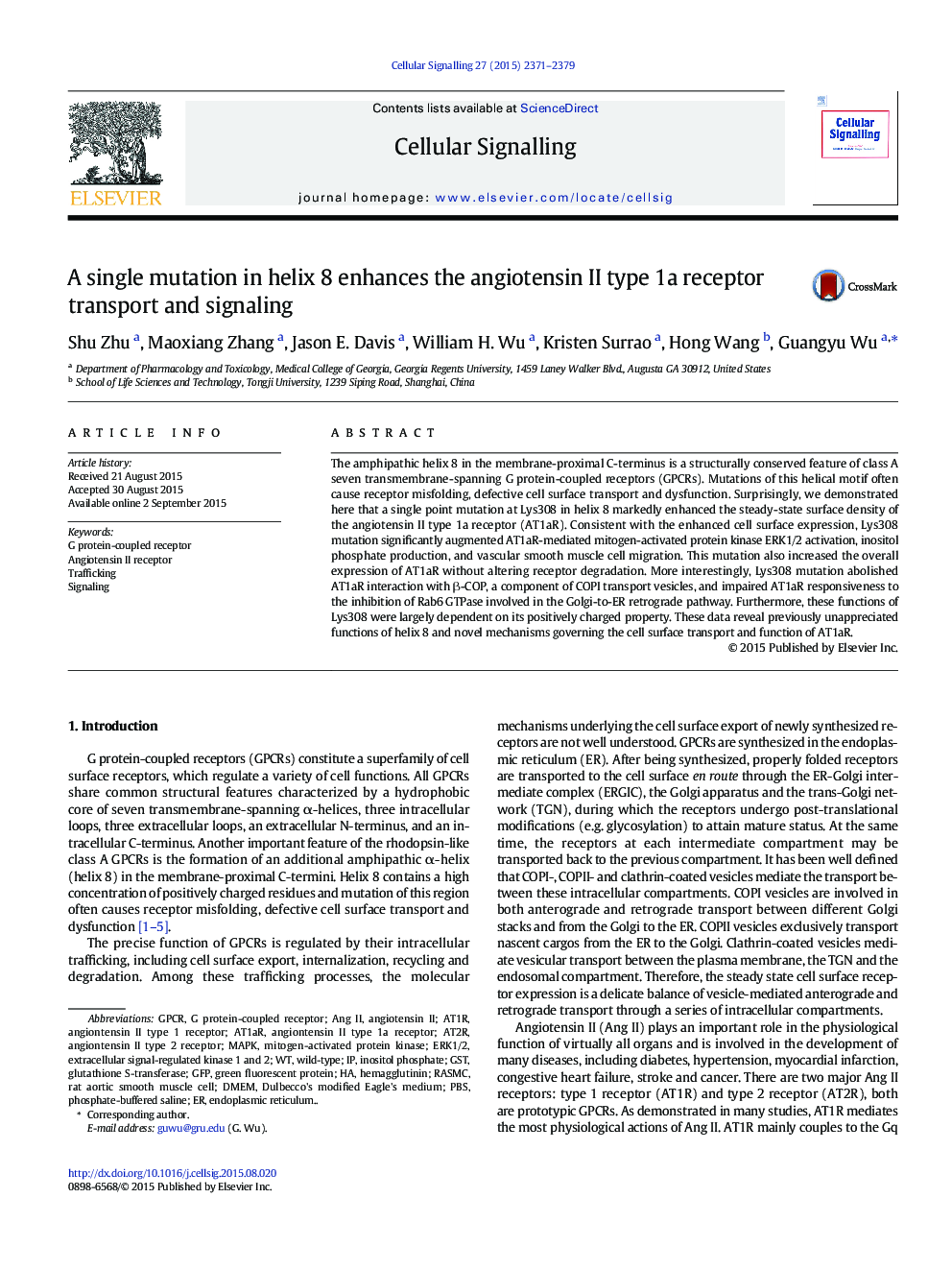| Article ID | Journal | Published Year | Pages | File Type |
|---|---|---|---|---|
| 10814794 | Cellular Signalling | 2015 | 9 Pages |
Abstract
The amphipathic helix 8 in the membrane-proximal C-terminus is a structurally conserved feature of class A seven transmembrane-spanning G protein-coupled receptors (GPCRs). Mutations of this helical motif often cause receptor misfolding, defective cell surface transport and dysfunction. Surprisingly, we demonstrated here that a single point mutation at Lys308 in helix 8 markedly enhanced the steady-state surface density of the angiotensin II type 1a receptor (AT1aR). Consistent with the enhanced cell surface expression, Lys308 mutation significantly augmented AT1aR-mediated mitogen-activated protein kinase ERK1/2 activation, inositol phosphate production, and vascular smooth muscle cell migration. This mutation also increased the overall expression of AT1aR without altering receptor degradation. More interestingly, Lys308 mutation abolished AT1aR interaction with β-COP, a component of COPI transport vesicles, and impaired AT1aR responsiveness to the inhibition of Rab6 GTPase involved in the Golgi-to-ER retrograde pathway. Furthermore, these functions of Lys308 were largely dependent on its positively charged property. These data reveal previously unappreciated functions of helix 8 and novel mechanisms governing the cell surface transport and function of AT1aR.
Keywords
PBSDMEMAT1ARGFPRASMCGSTAT2RAT1RGPCRERK1/2inositol phosphateMAPKDulbecco's modified Eagle's mediumAngiotensin IIAng IIRat aortic smooth muscle cellSignalingTraffickingPhosphate-buffered salinewild-typehemagglutiningreen fluorescent proteinmitogen-activated protein kinaseextracellular signal-regulated kinase 1 and 2glutathione S-transferaseAngiotensin II receptorG protein-coupled receptor
Related Topics
Life Sciences
Biochemistry, Genetics and Molecular Biology
Biochemistry
Authors
Shu Zhu, Maoxiang Zhang, Jason E. Davis, William H. Wu, Kristen Surrao, Hong Wang, Guangyu Wu,
